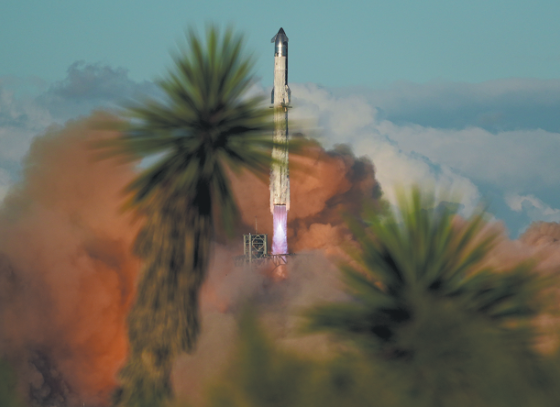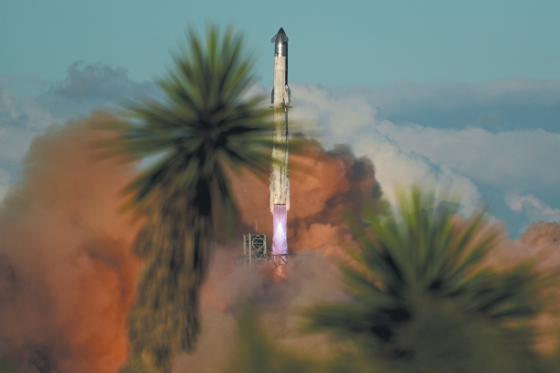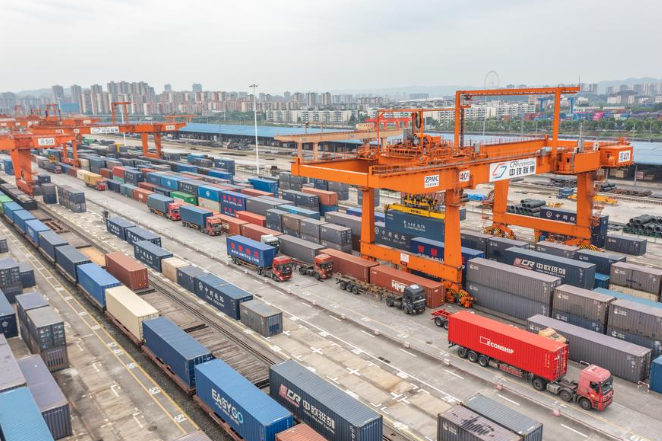SpaceX completes 11th test flight of Starship megarocket


WASHINGTON — SpaceX launched its 11th Starship rocket from Texas on Monday and landed it in the Indian Ocean, the last flight before the US company begins test-launching a new version of the giant rocket outfitted with more features for moon and Mars missions.
Starship, which includes the Starship upper stage stacked atop its Super Heavy booster, launched at 6:23 pm from SpaceX's Starbase facilities. After sending the Starship stage to space, Super Heavy returned for a soft water landing in the Gulf of Mexico seven minutes after liftoff, testing a landing engine configuration before blowing itself up.
Its last mission, in August, ended a streak of testing failures earlier this year. Monday's flight was similar to the previous one, again deploying a batch of mock Starlink satellites, briefly re-lighting its engines in space and testing new heat shield tiles during its blazing hot return from space before splashing down west of Australia.
Acting NASA Administrator Sean Duffy said on X that the mission was "another major step toward landing Americans on the moon's south pole".
SpaceX, in future tests, expects to launch a more advanced Starship prototype, tailored with upgrades essential for long-duration missions in space, the company said on Monday.
That includes docking adapters and other hardware changes key to orbital refueling, a complex process involving two Starships docking in orbit to transfer hundreds of tons of super-cooled propellant.
The upgraded prototype "is really the vehicle that could take humans to the moon and Mars", SpaceX's President Gwynne Shotwell said at a conference in Paris last month.
"So that's really the one we want to get to."
Shotwell said she expected that iteration of Starship to fly by year's end or early next year. SpaceX's chief executive Elon Musk has said he expects a refueling mission with two Starships to occur next year, a goal that NASA in 2024 expected to happen this year.
Refueling is one of many remaining testing objectives required before the rocket carries humans to the lunar surface, which is scheduled for 2027.
Many Starship tankers are needed to fill up one Starship with enough fuel for a moon landing under SpaceX's proposed moonshot plan.
Agencies Via Xinhua

































